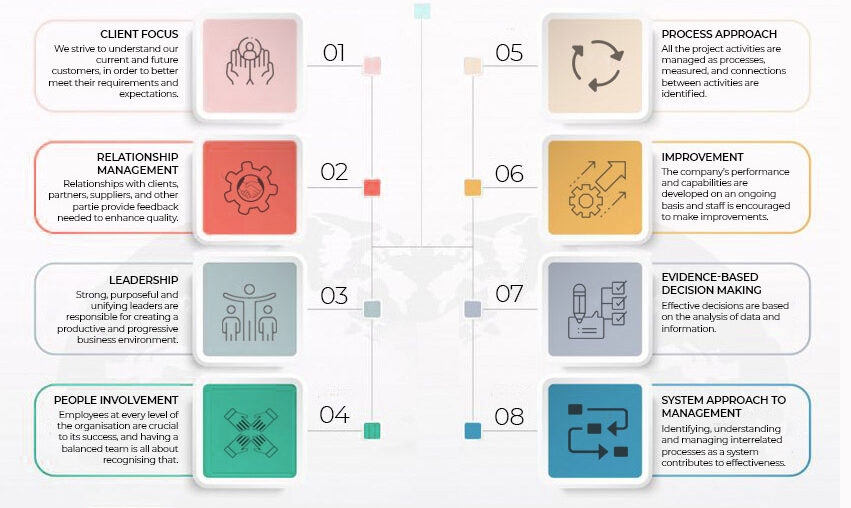T.H.E takes every effort to improve our resource and technology capability, continuously refining our services and processes to exceed clients’ expectations. We are committed to adhere to our Quality Policy. To promise our clients the highest quality services, our quality policy is defined and driven by the following quality management principles:
Principle 1 – Customer Focus: Can be achieved through understanding and meeting clients’ current and future goals, requirements and expectations.
Principle 2 – Relationship Management: Organizations that carefully manage their relationships with suppliers and partners can nurture positive and productive involvement, support, and feedback from those entities.
Principle 3 – Leadership: Organizations succeed when leaders establish and maintain the internal environment in which employees can become fully involved in achieving the organization’s unified objectives.
Principle 4 – Involvement of People: Organizations succeed by retaining competent employees, encouraging continuous enhancement of their knowledge and skills, and empowering them, encouraging engagement, and recognizing achievements.
Principle 5 – Process Approach: Organizations enhance their performance when leaders manage and control their processes, as well as the inputs and outputs that tie these processes together.
Principle 6 – Continuous Improvement: Organizations will maintain current levels of performance, respond to changing conditions, and identify, create and exploit new opportunities when they establish and sustain an ongoing focus on improvement.
Principle 7 – Evidence-Based Decision Making: Organizations succeed when they have established an evidence-based decision making process that entails gathering input from multiple sources, identifying facts, objectively analyzing data, examining cause/effect, and considering potential consequences.
Principle 8 – System approach to management: Organizations sustain success when processes are managed as one coherent quality management system.
